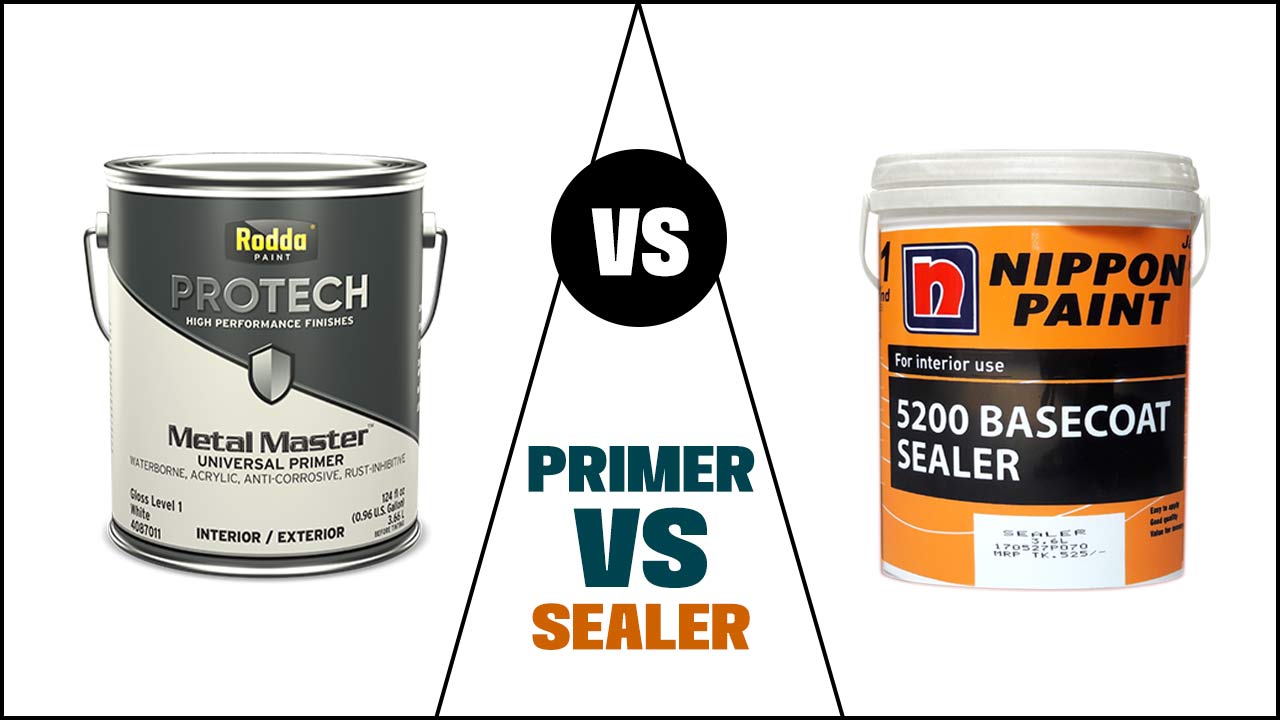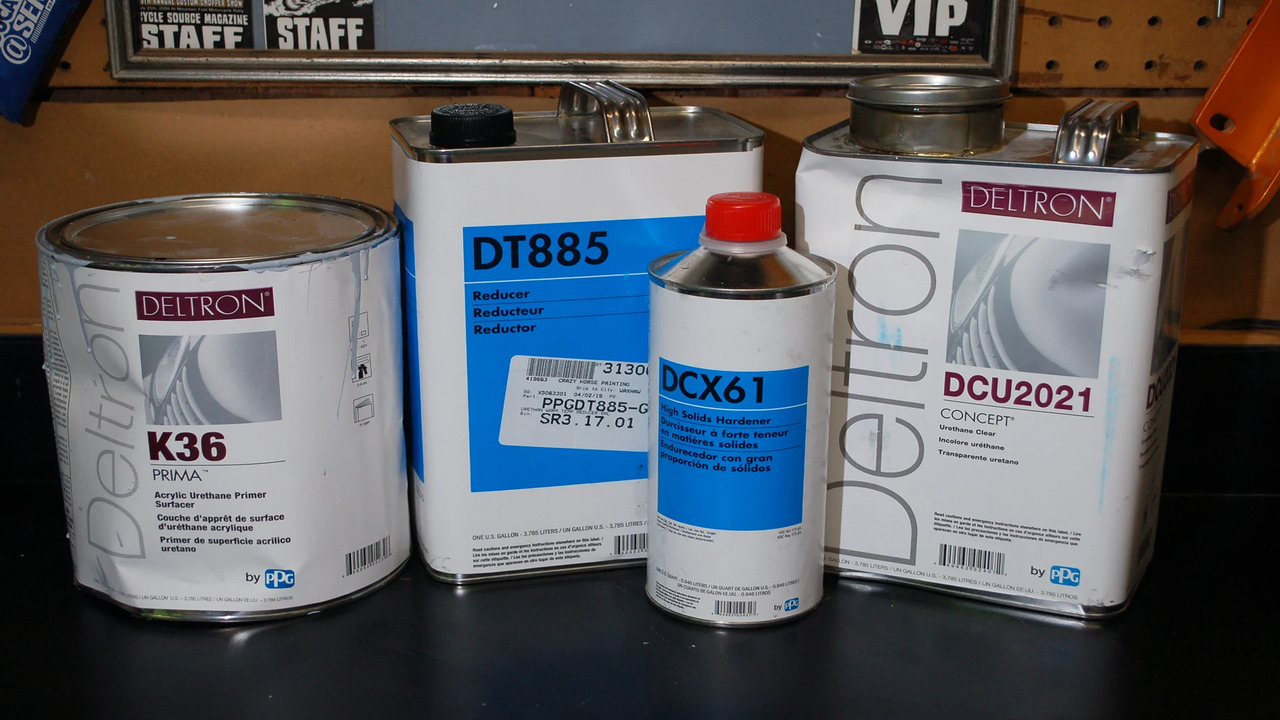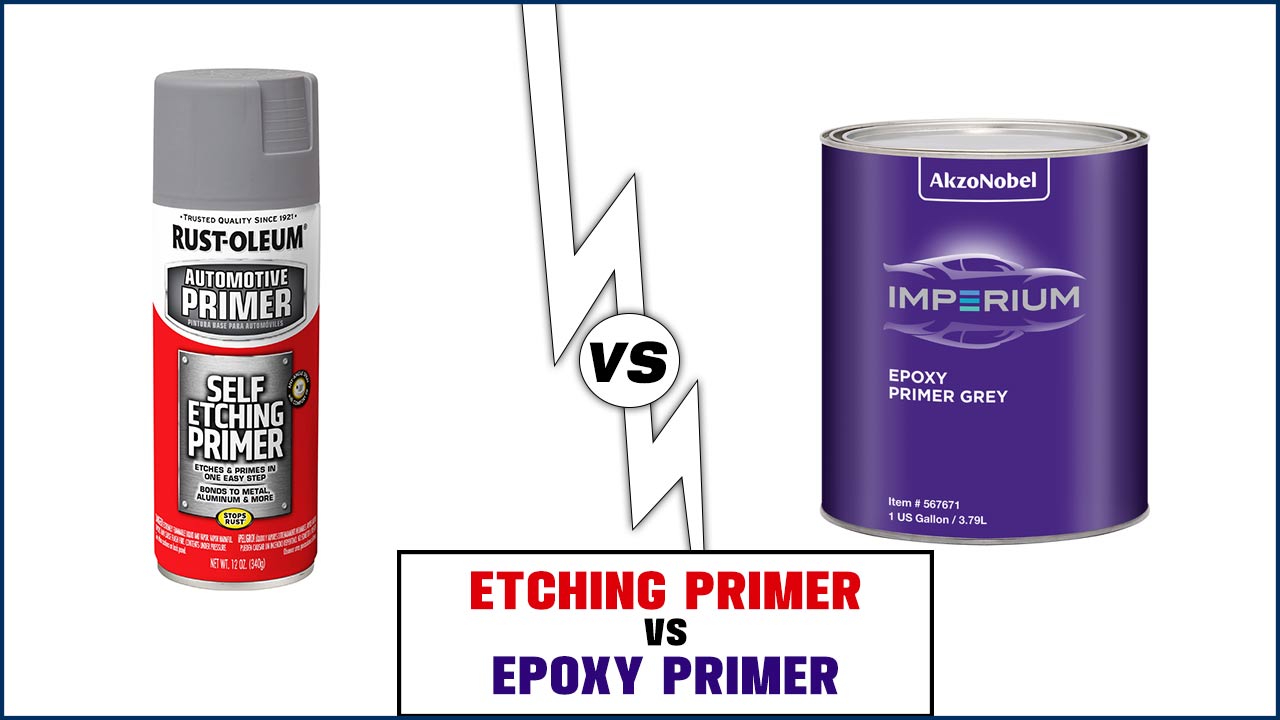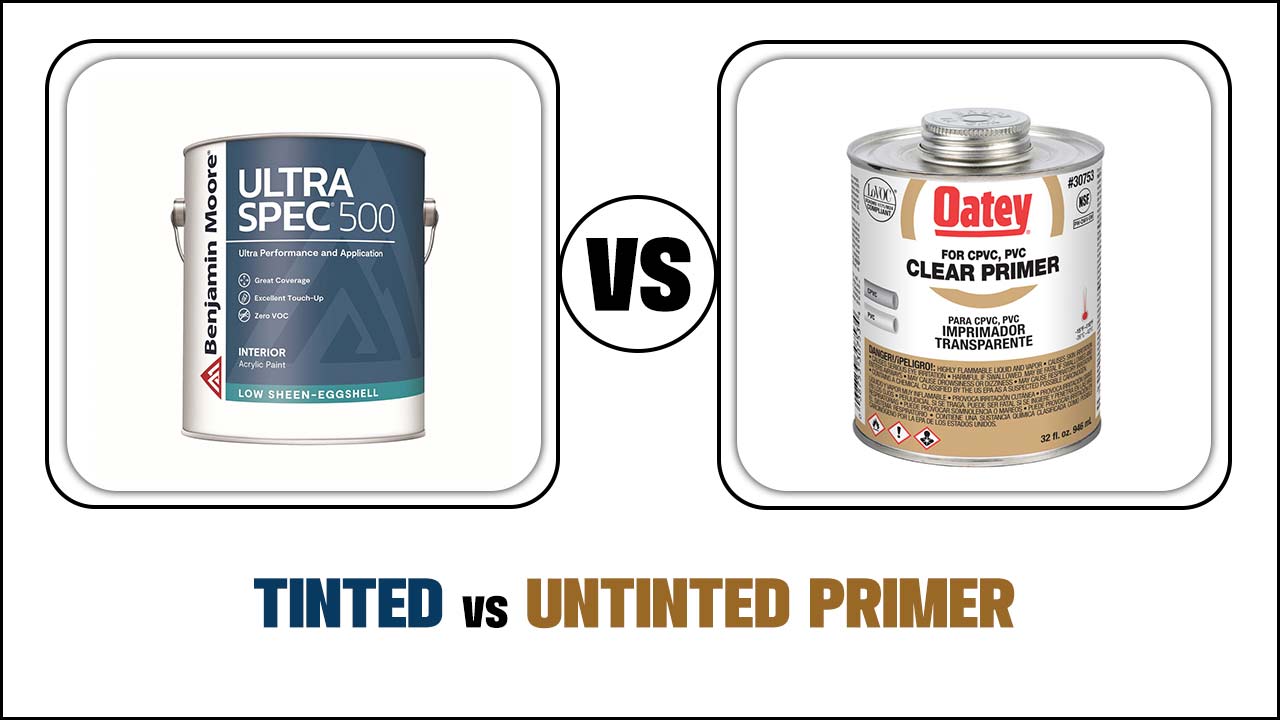When it comes to surface preparation for painting, two of the most commonly used products are Primer and Sealer. Both are essential for protecting the surface from damage and creating a strong bond between the surface and the paint. However, there are key differences between Primer Vs Sealer that should be considered when selecting the right product for the job.
This article will provide an in-depth comparison of Primer vs. Sealer, outlining the advantages and disadvantages of each product in order to help you make an informed decision. Get ready to find out which product is right for your project – the answer may surprise you!

Primer Vs Sealer: What’s The Difference?

Before we dive into the details of Primer vs. Sealer, it is important to understand what each product does and why it is necessary. Primer is a type of paint that is used to prepare a surface for painting, while sealer is a protective coating that is applied after the primer to protect the painted surface.
Primer helps to improve the adhesion of the paint to the surface and also helps to provide a uniform finish. Sealer helps to protect the painted surface from dirt, moisture, and other environmental elements. Both products are essential for a successful painting project, so it is important to understand the difference between them.
Definition
Primer and sealer are two types of coatings that are used to prepare a surface prior to painting or staining. Primer is a preparatory coating applied to a surface before painting, while sealer is an additional coat applied after the primer or paint to protect and seal the underlying layers. Primer is designed to create an even surface and reduce the amount of paint needed to cover the surface, while sealer provides a layer of protection from moisture, stains, and other contaminants.
Primers are typically thicker than sealers and are typically applied with a brush, roller, or sprayer. Sealers, on the other hand, are usually applied with a sprayer or roller and are thinner than primers.
Primer
Primer is an important part of the painting process. It helps to create a surface that is ready to accept and hold the paint. Primer seals and protects the surface from damage, and it also helps the paint adhere to the surface better.
Primer can also help to block stains, and it can be used to fill in cracks and other imperfections. Primer can also be used to create a smoother finish. It can also help to unify the look of a surface, making it easier to apply the paint. Primer should always be applied before the paint, and it should be allowed to dry completely before painting. Using primer can help to create a better quality finish that will last longer.
Sealer
Sealers are an important part of the painting process and help protect the finished product. They provide a protective coating to the painted surface and are designed to resist mildew, moisture, and other environmental factors.
Sealers also help to reduce the amount of paint needed to cover a surface. The type of sealer used depends on the material that needs to be sealed and the environment where it will be applied. Gloss sealers are usually used for interior walls and semi-gloss for exterior surfaces. Clear sealers can also be used as a topcoat to enhance the look of a painted surface.
Applications

Primer and sealer have a number of applications in painting and finishing. Primer is used to prepare a surface for painting with a top coat. It helps to create an even and even surface for painting and also helps to promote adhesion of the top coat. Sealer is a type of product that is applied to a surface to block out moisture and other contaminants, making it more resistant to damage.
Sealer can also help to reduce paint chipping and flaking. In addition, sealers can also be used to provide a protective finish to a surface, making it more durable and resistant to wear and tear.
Primer
Primer is an essential step in any painting project. It is a base coat that is applied to a surface before the paint. Primer helps the paint to stick better and last longer, as well as providing an even base coat for the paint.
Primer also helps to fill in any holes or cracks in the surface and can help to protect the paint from moisture and other environmental factors. Primer is usually applied with a brush or roller, and can be water-based or oil-based. Water-based primers are generally easier to work with and dry faster, while oil-based primers provide better protection against moisture and other elements. Primer can be used on a variety of surfaces, including wood, metal, masonry, and drywall.
It is important to select the right primer for the specific surface you are working with, as some primers may not be suitable for certain surfaces. Additionally, primer can help to improve the overall look of a project, providing a better finish.
Sealer
Sealers are the last step in the painting process. They protect the surface of the paint from dirt, dust, and other environmental elements. Sealers also provide a finish to the surface, giving it a glossy or matte look.
The type of sealer used will depend on the type of paint used and the desired look. Sealers can also be used to protect the paint from fading. Sealers are usually applied over primer and paint, and once applied, they will seal the surface and provide a long-lasting finish. Sealers can be applied using a brush, roller, or sprayer.
It is important to use the right type of sealer for the specific job, as some sealers may react with the paint or primer.
Advantages

Primer and sealer are two different products used for painting and finishing projects. Primer is applied first and is designed to adhere to the surface and provide a firm base for the paint or finish. Sealer is applied after primer and is designed to protect the underlying surface and coatings.
Both primer and sealer have advantages depending on the project. Primer is usually best for porous surfaces like drywall, wood, and metal, as it helps the paint adhere better and helps prevent any underlying colour from bleeding through.
Sealer is best for non-porous surfaces like plastic and metal, as it creates an extra layer of protection and helps prevent chips and scratches. Primer and sealer can be used together to create a more durable and long-lasting finish, but for some projects, one or the other is sufficient.
Primer
Primer is a type of paint that is used to prepare the surface for paint. It helps create a bond between the surface and the paint. Primer is especially important for surfaces that are exposed to the elements, such as wood or metal. Primer helps prevent peeling, chipping, and fading of the paint.
It also fills in any pores or imperfections in the surface, making the paint job look more professional. Primer can also be used to help protect the surface against mildew and moisture. Primer typically comes in both oil-based and latex-based formulas, so it’s important to choose the right one for the job.
Oil-based primers work best on surfaces that are exposed to a lot of moisture, while latex-based primers are better for interior surfaces. Primers come in a variety of colors, so you can choose one that will best suit your project.
Sealer
Sealer is a type of coating applied after the primer and before the topcoat. It is designed to protect the surface and provide a uniform base for the topcoat. It is also important in increasing the adhesion and durability of the topcoat. Sealer can be either oil- or water-based and come in a variety of sheens and colors.
It is generally applied with a brush or roller and can be used on both interior and exterior surfaces. While it is not necessary to use a sealer, it will provide added protection and ensure a uniform finish.
Disadvantages

Primer and sealer both have their disadvantages to consider when deciding which to use for a particular project. Primers are typically more expensive than sealers, so budget may be a deciding factor. Primers also typically require more coats to achieve the desired results than sealers, which can be time consuming.
Primers also contain more solvents, which means they must be applied in a well-ventilated area or with the appropriate protection. Sealers are typically less expensive than primers but may not provide the same level of protection or durability. They are also more prone to yellowing over time and can be more difficult to remove from surfaces if not applied correctly.
Primer
Primer is a paint or coating applied prior to painting or coating. It helps to improve adhesion of the topcoat to the substrate and provides additional protection for the topcoat. Primer also helps to block stains, seal porous surfaces and fill small cracks and holes. Primer is an essential step in any paint job, as it adds durability and longevity to the finished product.
Primer can also help to reduce labor costs, as it helps to create a smoother finish and can reduce the amount of topcoat needed. Primer is available in a variety of finishes, including water-based, oil-based and latex-based. Each type of primer has its own advantages and disadvantages; for example, latex-based primer is easier to clean up, while oil-based primer provides a longer-lasting finish.
Sealer, on the other hand, is a thin coating applied to a surface after primer and prior to painting or coating. Its purpose is to provide a protective barrier between the primer and the topcoat, helping to prevent any peeling or chipping of the topcoat. Sealer also helps to reduce the amount of fading of the topcoat over time and can even help to block out stains.
Sealer
A sealer is a product used to protect the surface of a painting project. It works by creating a tougher surface that is less likely to absorb paint or other liquids. Sealers are available in a variety of finishes, including satin, matte, and gloss.
They can be used on wood, concrete, and other surfaces to provide protection from spills and other damage. Sealers can also be used to create a smooth finish on walls or other surfaces before painting. This helps ensure a uniform, professional look. Sealers are usually applied with a roller or brush, and drying time will vary depending on the type of sealer used.
Conclusion
Primer and sealer are two different products used to protect and enhance surfaces. Primer is used to prepare a surface for painting, while sealer is used to protect the surface from moisture and other elements.
Primer helps paint adhere to the surface better and provides a smoother finish, while sealer helps protect the surface from damage and wear. Both products are important for creating a beautiful, lasting finish on any surface.
FAQ’s
1.What Is The Difference Between Primer And Sealer?
Ans: Primer is a layer of paint applied before the final coats of paint. It is designed to seal the surface and provide a better bond for the top coats of paint. Sealer is a layer of paint or coating that is applied after the primer and before the final coats of paint. Unlike primer, it is designed to protect the paint and make it more durable.
2.What Are The Advantages And Disadvantages Of Using A Primer Versus A Sealer?
Ans: The main advantage of using a primer is that it helps to create a better bond between the underlying surface and the paint, resulting in better adhesion and a longer lasting finish. A primer also helps to increase the coverage of the paint and can provide a smoother surface for the paint to adhere to.
The main disadvantage of using a primer is that it can be expensive and time consuming. On the other hand, a sealer is more affordable and can provide an effective seal against moisture and other elements. The downside is that it does not provide the same level of adhesion as a primer.
3.When Should Primer And Sealer Be Applied?
Ans: Primer and sealer should be applied prior to painting to ensure a professional finish and long-lasting results. Primer should be applied to new surfaces, such as drywall, to provide a uniform finish and promote adhesion. Sealer should be applied to previously painted surfaces to provide a better surface for the new coat of paint, as well as to help protect the existing paint finish. Both primer and sealer should be applied before painting to ensure the best results.
4.Is It Necessary To Use Primer And Sealer Together?
Ans: No, it is not necessary to use primer and sealer together. Primer is used to prepare a surface for painting, while sealer is used to protect the surface from moisture and other elements. However, in some cases, using both primer and sealer together can provide better protection and longer lasting paint job. Ultimately, it depends on the specific project and the materials being used.
5.What Types Of Surfaces Require The Use Of Primer And Sealer?
Ans: Surfaces that have been newly prepared or are very porous, such as drywall, wood, concrete, and metal, require the use of primer and sealer. Primers and sealers are used to create a uniform surface for painting, to prevent staining and to provide a protective barrier against moisture and other elements. Primers and sealers also help to create a better bond between the surface and the paint, ensuring that the paint lasts longer. Primers and sealers can be either oil-based or water-based, depending on the surface material.





